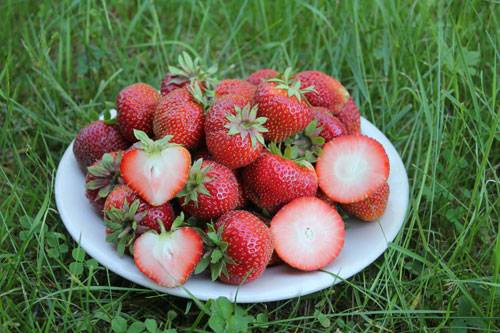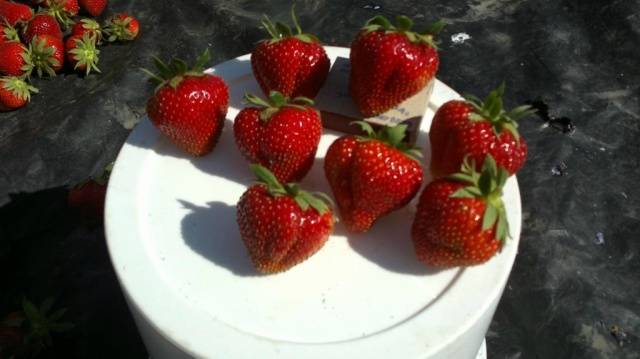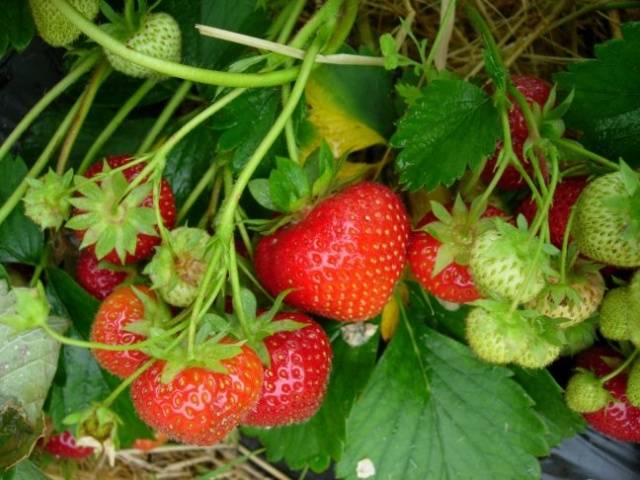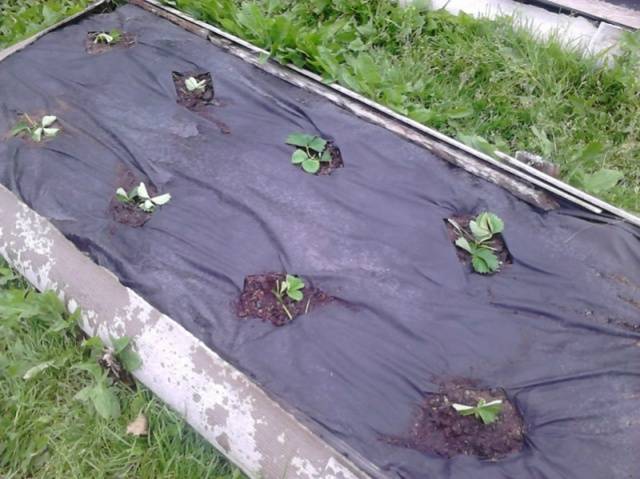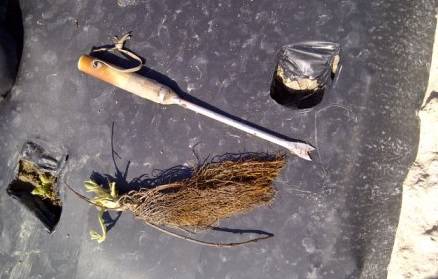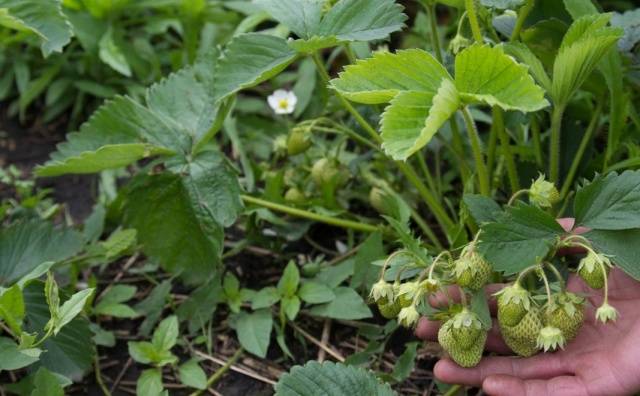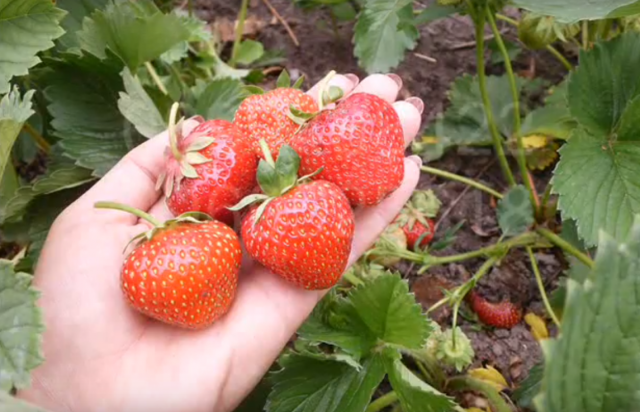Content
Favorite garden berry, strawberry, is characterized by a variety of varieties. In the 90s, the Sonata strawberry, a striking example of industrial use, was bred in Holland. The beautifully shaped berries have a rich taste and aroma, withstand transportation, and are suitable for growing in open ground and greenhouses.
Characteristic
The Sonata strawberry variety has a famous family: Elsanta and Shelf... Having inherited large-fruited and productivity, the variety is distinguished by its good ability to adapt to different weather conditions and resistance to a group of diseases. Abundant fruiting is also noted in dry seasons, along with the plant's resistance in winter in continental climates. The flowers are not afraid of recurrent frosts, low peduncles are hidden among the foliage. Medium early strawberries of the Sonata variety are chosen for cultivation due to the long harvest period, which starts from mid-June, and the yield - up to 1.0-1.5 kg per bush.
The abundant fruiting of the plant is due to the amicable flowering. Large amounts of pollen are generated and many ovaries are formed. The berries of the Sonata strawberry variety, according to reviews, are uniform, look attractive, which ensures their success with buyers. Commercial suitability is inherent in 70% of the crop. The good quality of the berries is preserved even in the rain. Dense, dry fruits do not crack well. The most abundant collection of berries of this variety is in the second half of June, but the formed ovaries also ripen in July. On average, the berries ripen for 40-50 days.
Sonata strawberries, according to the description of the variety and reviews, are popular in large farms and on the plots of gardeners. Excellent results of growing early products are obtained in greenhouses. The variety is planted in beds and in regions with a brief cool summer, covering the plants for the winter. Shrubs of the Sonata variety grow on one site for 5 years, maintaining the volume of the harvest. Due to its bright tasting qualities, Sonata strawberries are best consumed fresh. Excess berries are frozen or boiled with compotes, jams.
Advantages and disadvantages of the variety
Judging by the description of the variety, photos and reviews of gardeners, the popularity of the Sonata strawberries is deserved by obvious advantages.
- Excellent taste and abundant long-term fruiting;
- High commercial performance;
- Plant adaptation in different climatic conditions;
- Strawberry resistance to gray mold and powdery mildew.
Among the negative characteristics of the Sonata variety are the following:
- Delayed separation of berries from sepals due to the lack of a neck;
- A small number of mustaches on the bush;
- Susceptibility to verticillosis;
- Possibility of root damage at high humidity;
- The need for a long period of winter rest;
- Mandatory feeding.
Comparing the points, we can conclude that the Sonata strawberries are quite worthy to occupy their niche in the beds and in greenhouses. Most of the shortcomings are made up by careful care and fades before a bountiful harvest.
Description
Sonata strawberry bushes are compact, low-leafed, form a little mustache. Peduncles are strong, withstand large berries, but not high, covered with dark green wrinkled leaves or protrude somewhat above the bush. The flowering is friendly. The anthers are large and carry a lot of pollen, which ensures abundant ovaries.
The Sonata strawberry variety is known for its sweet dessert berry taste with a slight pleasant sourness and captivating aroma. Berries of the correct wide-conical shape, deep red color, evenly colored when ripe. The surface of the fruit is shiny, the pulp is dense, but tender, juicy. The mass of berries is 30-50 g, the diameter of the fruit is 3.5 cm.The seeds are not on the surface,
Growing
It is necessary to plant Sonata strawberries on fertile soil prepared for six months. The soil is enriched with humus or compost, potash fertilizers and superphosphate are applied, according to the instructions. Much attention should be paid to Sonata strawberry seedlings.
- High quality strawberry seedlings have a strong horn, up to 8 mm thick;
- The plant has at least 4-5 healthy-looking leaves: elastic, evenly colored, without spots and plaque;
- The root lobe is dense, 7-10 cm long;
- The leaves and roots of the seedling are fresh, not wilted.
Seedling
In the trade, there are sonata strawberry seedlings that have been frozen. High quality frigo seedlings, technological operations of selection and sorting are carried out automatically and manually. Plants with generative buds are selected that meet the specified requirements for the variety. They are dug out already formed, in late autumn. Treated with broad-spectrum fungicides, stored at -1.8 0C up to 9 months.
- The purchased frigo seedlings are slowly thawed;
- Cut off the tips of the roots and put in water for 6-10 hours;
- Before planting, the roots can be treated with a fungicide. The drug is dissolved in water and mixed with a clay mash. Clay helps to keep the product close to the roots.
- Planted strawberry plants are watered abundantly. They take root quickly, since the seedlings do not have leaves;
- After a week, the leaves grow back, and after 10-12 days, the first feeding is carried out.
Landing rules
For a good quality harvest, you need to plant Sonata strawberries on a site that meets the requirements in the variety description.
- For the Sonata variety, the best soil is fertile, slightly acidic. Grows well in sandy areas where it is carefully fertilized;
- Choose a sunny area, without drafts;
- The hills are more suitable for planting Sonata strawberries. Low-lying areas are dangerous for plants with a close groundwater level, which can lead to decay of the roots;
- Avoid planting the Sonata variety on heavy, clayey soils. In extreme cases, be sure to provide good drainage and dilute the soil with coarse sand or arrange ridges;
- The site is thoroughly cleaned of weeds and their long roots.
Sonata strawberries are planted in spring or July. Planting in August is contraindicated, because the plants do not adapt and will enter the winter weakened.
- The holes are made 25-30 cm apart, the depth corresponds to the length of the strawberry roots;
- The roots are gently kept in weight while sprinkled with soil;
- The outlet necessarily protrudes above the ground;
- After planting, the soil is watered abundantly.
Care
For the good development of Sonata strawberry bushes, several basic requirements must be met.
- Weeds are carefully weeded to avoid the multiplication of pests and fungal diseases;
- After planting, the plants are watered abundantly. If strawberries were planted in the fall, watering is stopped only in October;
- During the dry season, at least 1 liter of water will be consumed for each Sonata strawberry bush;
- If there is no rain, watering is required during flowering and ovary formation;
- Leave a mustache for seedlings only from the three-year-old bushes of the Sonata;
- At the end of September, the beds are covered with straw for the winter, and dense agrotex is pulled over dry branches.
Top dressing
Strawberries of the Sonata variety must be fertilized periodically, correctly maintaining the balance of trace elements. 1 liter of nutrient solution is poured under each bush.
- The composition of dressings should include magnesium, manganese, iron;
- In the spring, nitrogen fertilizers are used. Before flowering, 50 g of azophoska is dissolved in 10 liters of cooled boiled water;
- Use soil and foliar dressing with special means: "Sudarushka", "Ryazanochka" according to the instructions.
Plant protection
Effective prevention of fungal diseases is harvesting autumn mulch from the beds in spring, removing weeds, and moderate planting density. In August, the leaves of the Sonata strawberry bushes must be cut off.
- In case of infection with verticillosis, the bushes are sprayed with drugs Fundazol, Benorado;
- Bayleton, Teldor, Fundazol and other fungicides help fight gray mold.
High-yielding berry picking is possible subject to agricultural technology. The gardener should take care to get full fruiting.
